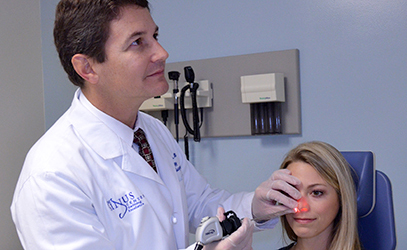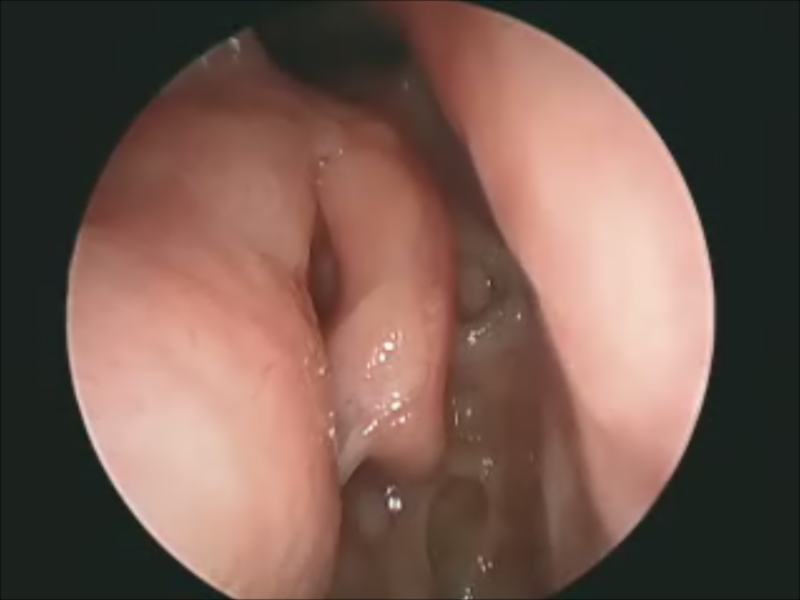July 2014:
Skullbase Defects and CSF Leaks
August 2014:
Contemporary Management of Laryngomalacia
September 2014:
Oral vs. Oropharyngeal Cancer, Compare & Contrast
|
Our E-Update Newsletters are designed to provide brief, practical, clinical updates in areas where we all struggle in managing our patients. To view past issues, please visit our Archives. |
July 2014
The Charleston Course: Otolaryngology Literature Update
November 2014
F. Johnson Putney Lectureship in Head & Neck Cancer
February 2015
Charleston Sleep Surgery Symposium
March 2015
Pediatric ENT Update
For program brochure, registration form, and more, please visit
our website.
|
We want to hear from you!
We welcome your feedback on our newsletter articles as well as any ENT questions you may have. If there are topics you are interested in learning more about, please
|
|
|
In our June E-Update, Rodney J. Schlosser, M.D. describes the relationship between CRS and asthma, the ability to predict if patients with CRS will have asthma, and the impact of medical and/or surgical treatment of CRS on asthma outcomes.
More information on Dr. Schlosser follows the article below and is on our website. As always, we encourage your feedback or questions about the E-Udate articles, your patients, or any other ENT issue. Write to us at [email protected] and please forward this E-Update to all who may be interested.
You many also find information in our SCOPE Spring 2014 newsletter helpful in your practice.
Many thanks for your continued interest and support.
Paul R. Lambert, MD
Professor and Chair
|
|
 | | Rodney J. Schlosser, M.D. - Associate Professor and Director, Nose & Sinus Center, MUSC |
The Link Between CRS and Asthma
|
What's the relationship between CRS and asthma?
As otolaryngologists, we often see patients who have both sinonasal and lower airway symptoms and ask this question. The relationship between inflammatory conditions of the upper and lower airways is well recognized and has resulted in the unified airway hypothesis. When the upper airway is affected with allergic rhinitis, there is concern regarding the "atopic march". It appears that as inflammation of the respiratory tract develops, it typically begins in the upper airway and then progresses to the lower airway. When the upper airway is affected with chronic rhinosinusitis (CRS), studies have demonstrated that 25-30% of CRS patients have been diagnosed with asthma1, 2. Conversely, 80-94% of asthmatics already have involvement of the upper airway with rhinitis and/or CRS with nasal polyps (CRSwNP)1-3. This progression of disease from the upper airway to the lower airway was demonstrated by Williamson2 who examined a cohort of patients with CRSwNP and found that while 39% had diagnosed asthma, an additional 30% had subclinical asthma. While they had no clinical symptoms, these patients had signs of inflammation on fractional exhaled nitric oxide (FENO) or pulmonary function tests (PFTs). Only 31% of CRS patients had no evidence of lower airway involvement. Thus there are a significant number of patients who present with upper airway symptoms and have subclinical inflammation of the lower airway, but once lower airway disease has developed, there is a high likelihood that the upper airway is already involved.
How can we predict which CRS patients will have asthma?
Williamson4 examined CRSwNP patients and found that serum eosinophilia, but not clinical staging of sinus disease with endoscopy or symptom scores correlated with objective lung function. This is not surprising given that all CRS patients had CRSwNP, thus representing the most severe spectrum of upper airway disease. A number of inflammatory markers in the nasal mucus of CRS patients, including total IgE, Staphylococcus aureus enterotoxin (SAE) IgE, and markers of eosinophilic inflammation, may be important predictors for asthma5 but are not currently used widely in clinical practice. Conversely, in patients already diagnosed with asthma, severity of asthma is associated with nasal polyposis and worse CT scores1. So for now, when patients present to us for CRS evaluation, we must simply maintain a high level of suspicion in patients with lower airway symptoms and work up should include pulmonary function tests with challenge.
Will medical or surgical treatment of the upper airway improve asthma?
Prior studies have examined the impact of medical and/or surgical therapy of CRS upon asthma outcomes. Both medical and surgical treatments of CRS do improve asthma symptoms, however lack of standardized medical treatment protocols make it difficult to determine superiority of one modality over the other. Current practice is typically to reserve surgery for patients who have failed aggressive medical therapy. Surgery for the patient with CRS and asthma must take into consideration that patients will likely need postoperative topical therapies with steroids to control the underlying mucosal inflammation. Evidence supports surgery to open the sinuses widely and then use of large volume delivery so that steroid medication is able to reach the paranasal sinuses6. Newer delivery techniques, such as steroid eluting stents, may play a role in the future.
 | |
Endoscopic view of left sided sinuses in patient with aspirin exacerbated respiratory disease who underwent her 4th surgery. Widely patent Lothrop cavity and ethmoid sinuses for access of steroid irrigations resulting in no polyps and no systemic steroids for CRS or asthma in the last 2 years.
|
Rodney J. Schlosser , M.D.
Medical University of South Carolina
|
- REFERENCES -
- Lin DC, Chandra RK, Tan BK, et al. Association between severity of asthma and degree of chronic rhinosinusitis. Am J Rhinol Allergy. Jul-Aug 2011;25(4):205-208.
- Williamson PA, Vaidyanathan S, Clearie K, Barnes M, Lipworth BJ. Airway dysfunction in nasal polyposis: a spectrum of asthmatic disease? Clin Exp Allergy. Oct 2011;41(10):1379-1385.
- Demoly P, Bousquet PJ. Links between allergic rhinitis and asthma still reinforced. Allergy. Mar 2008;63(3):251-254.
- Anaissie EJ, Segal BH, Graybill JR, et al. Clinical research in the lay press: irresponsible journalism raises a huge dose of doubt. Clinical infectious diseases : an official publication of the Infectious Diseases Society of America. Oct 15 2006;43(8):1031-1039.
- Bachert C, Claeys SE, Tomassen P, van Zele T, Zhang N. Rhinosinusitis and asthma: a link for asthma severity. Curr Allergy Asthma Rep. May 2010;10(3):194-201.
- Thomas WW, Harvey RJ, Rudmik L, Hwang PH, Schlosser RJ. Distribution of topical agents to the paranasal sinuses: an evidence-based review with recommendations. International forum of allergy & rhinology. May 31 2013.
|
About Dr. Schlosser...

Rodney J. Schlosser , M.D.
Associate Professor
Director, Nose & Sinus Center
Advanced M.D.: Mayo Medical School Residency: University of Virginia
Fellowship: University of Pennsylvania
Special interest: Adult and pediatric sinus and allergy disease, cerebrospinal fluid leaks, nasal and sinus tumors.
|
|
|
|
|